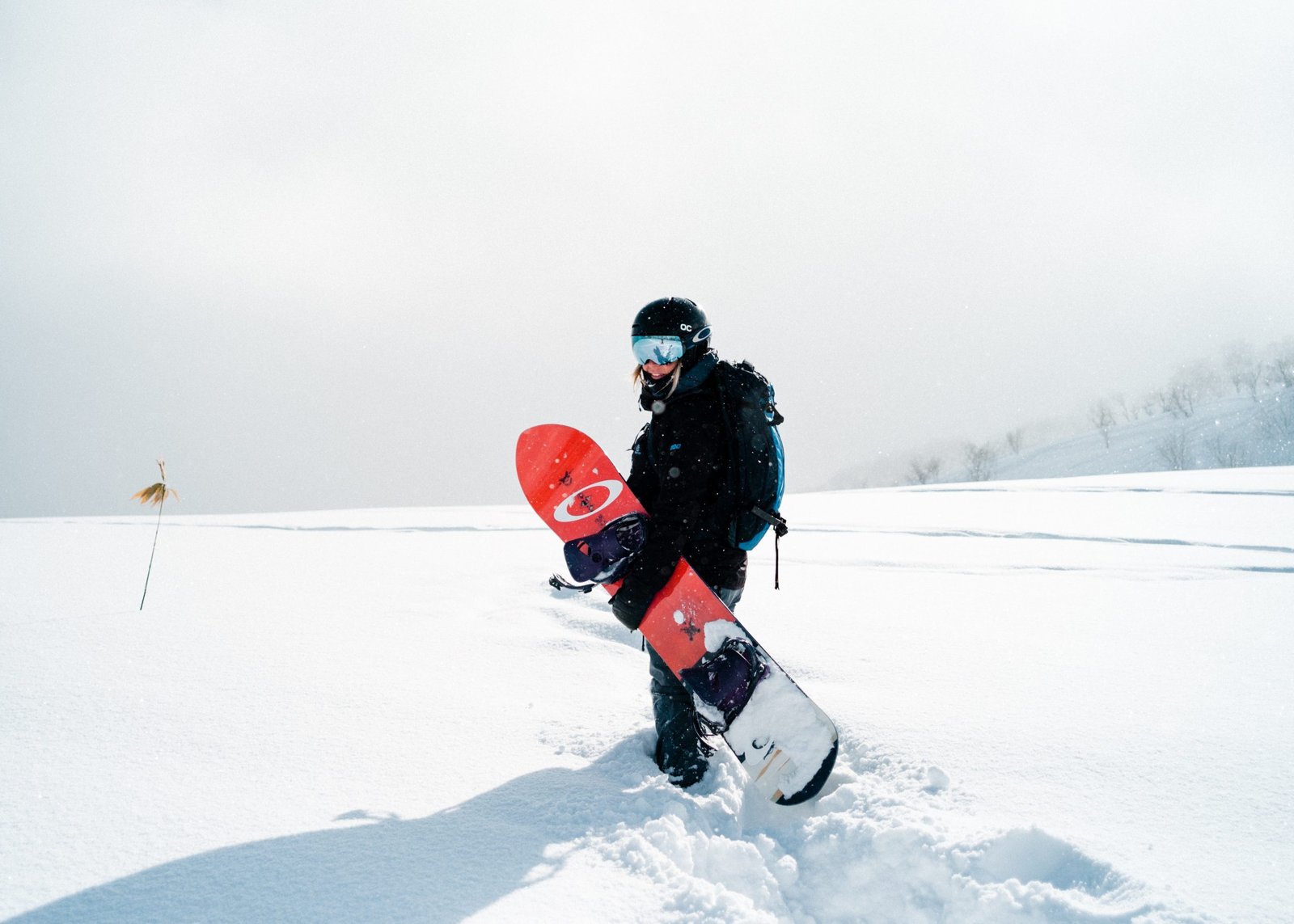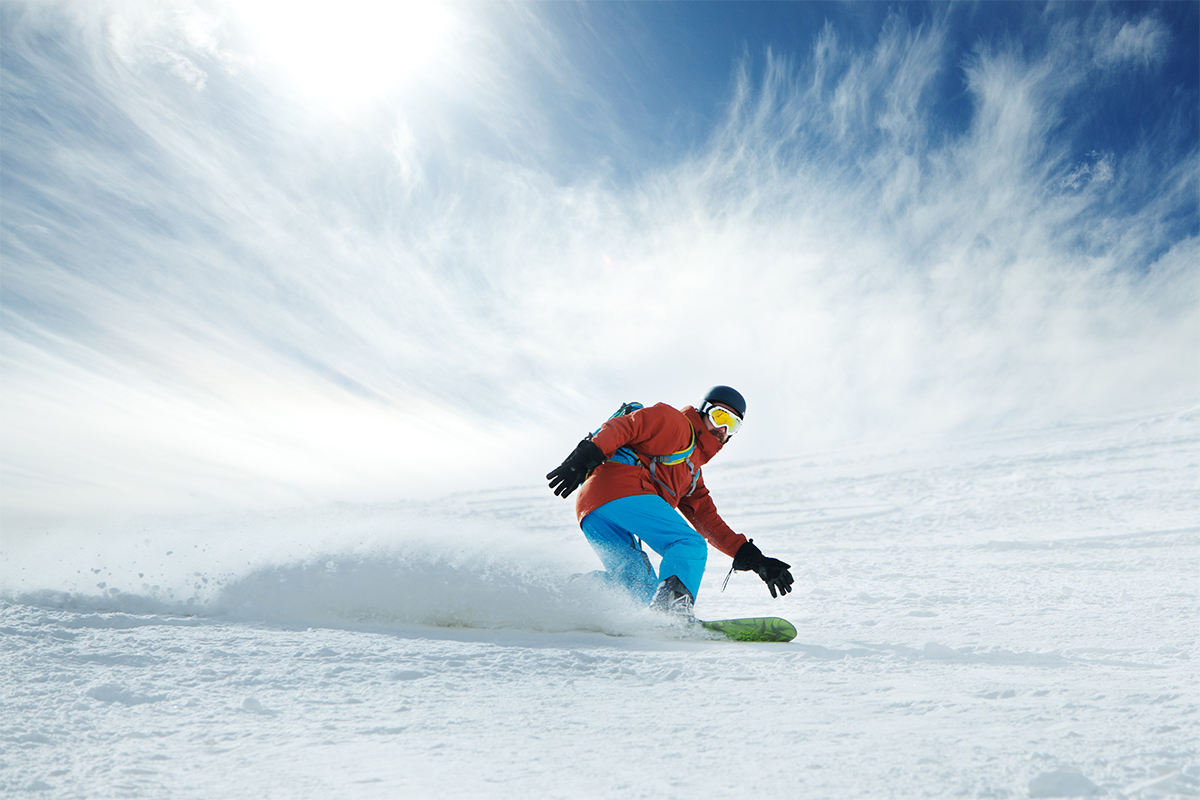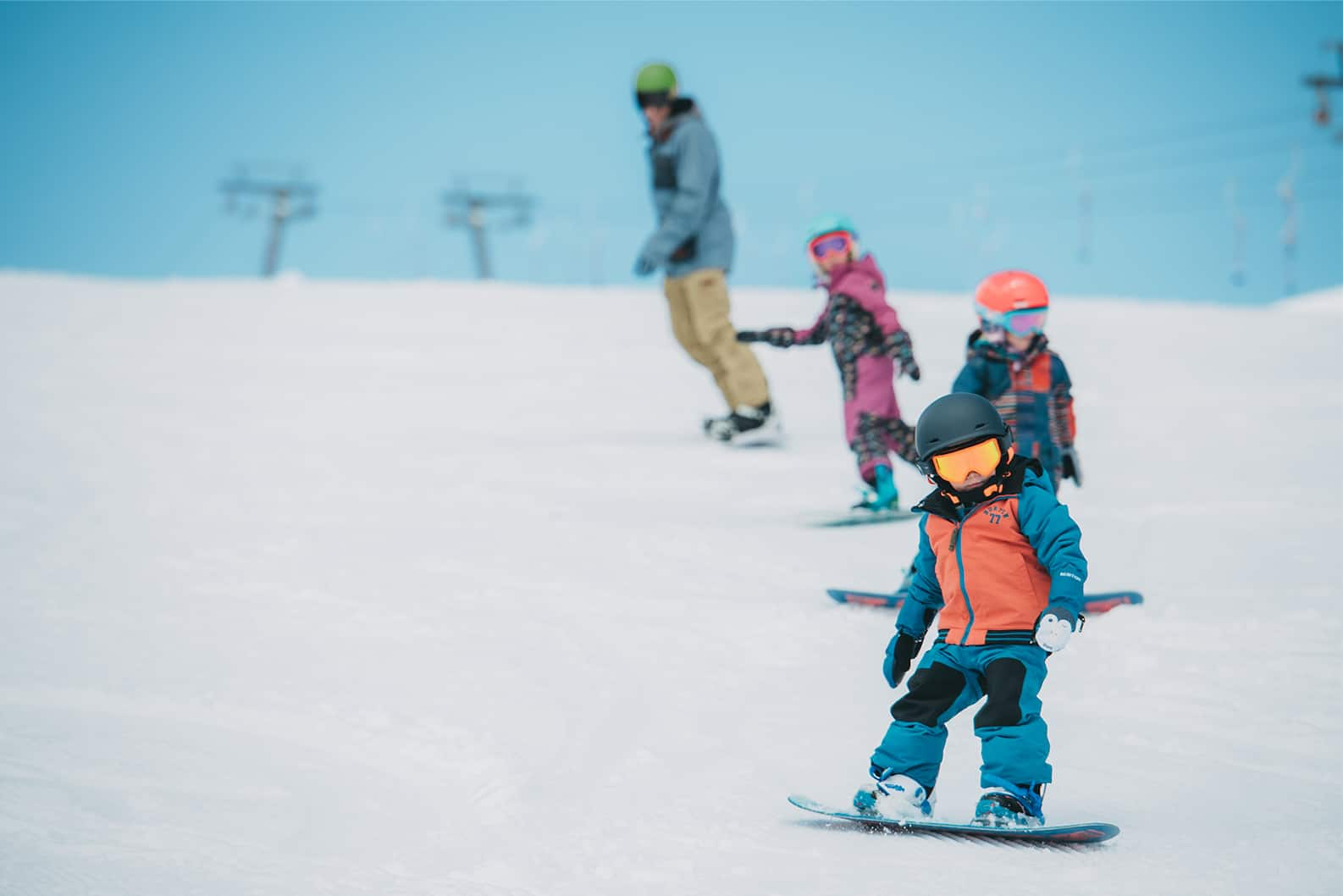
How to Prepare for Your First Snowboarding Trip and Make the Most of It
Written: editor | June 5, 2023

Essential Gear for Snowboarding
1. Snowboard Selection and Sizing
When preparing for your first snowboarding trip, selecting the right snowboard is crucial. Consider your skill level, riding style, and terrain preferences. If you're a beginner, a softer and more forgiving board is recommended. Make sure the board is the right size for your height, weight, and shoe size. Generally, a board should reach between your chin and nose when stood on its end. Renting a board is a good option if you're just starting out.
2. Bindings, Boots, and Helmet
Bindings connect your boots to the snowboard, providing stability and control. Choose bindings that are compatible with your boots and ensure they are properly adjusted to your riding style. Good snowboarding boots should be comfortable, supportive, and durable. Consider renting boots if you don't own a pair. Lastly, never forget to wear a helmet for safety. It protects your head from potential injuries and should fit snugly without any low-hanging straps.
3. Clothing and Protective Gear
Layering is essential to stay warm and comfortable on the slopes. Start with a moisture-wicking base layer to keep sweat away from your body. Add an insulated mid-layer and a waterproof outer layer to protect against snow and wind. Dressing in breathable and waterproof clothing will help regulate your body temperature. Don't forget to wear snowboarding-specific socks to keep your feet warm and dry in your boots. Additionally, consider wearing wrist guards and impact shorts for added protection.
Remember that proper gear ensures a safe and enjoyable snowboarding experience. Renting equipment is an option if you're trying out the sport for the first time. Stay safe, have fun, and enjoy your first snowboarding adventure!

Understanding the Basics
1. Learning to Balance and Stance
Before you hit the slopes on your first snowboarding trip, it's crucial to understand how to balance and establish the correct stance. Balance is key to staying upright and maintaining control while riding. Start by standing with your feet shoulder-width apart and knees slightly bent. Distribute your weight evenly on both feet to maintain stability. Practice shifting your weight from side to side to get a feel for maintaining balance. Finding the right stance is also important, as it determines your control and comfort on the board. Experiment with different widths and angles of your feet to discover what feels most natural and supportive for you. Remember to keep your shoulders aligned with your board for optimal control.
2. Mastering the Toe and Heel Edge Techniques
Learning how to control your speed and change direction is vital in snowboarding. The toe and heel edge techniques are essential skills to master. To initiate a turn, shift your weight onto your toes or heels while maintaining a balanced body position. This will engage the corresponding edge of your snowboard and guide you in the desired direction. Practice controlling your speed by adjusting the angle of your board and the pressure you apply to your edges. Gradually increase your comfort level and refine your technique.
3. Proper Falling and Getting Back Up
As a beginner snowboarder, you can expect to take a few falls along the way. Knowing how to fall safely and get back up will prevent injuries and keep your confidence intact. When falling, try to roll with the momentum rather than resisting it, aiming to land on your forearms and buttocks instead of your hands or wrists. To get back up, turn onto your stomach and place your snowboard perpendicular to the slope. Use your hands and knees to push yourself up, focusing on one knee at a time. Remember to take your time and assess any potential hazards before getting up.
By understanding the basics, you'll be well-prepared for your first snowboarding trip and set yourself up for an enjoyable and successful experience on the slopes.

Preparing Physically and Mentally
Are you excited for your first snowboarding trip? As a beginner, it's important to prepare yourself physically and mentally for this thrilling adventure on the slopes. Here are three key points to consider:
1. Conditioning Exercises for Snowboarding
To maximize your experience and minimize the risk of injury, it's crucial to be physically prepared. Snowboarding requires strength, balance, and endurance. Consider incorporating the following exercises into your fitness routine:
- Building leg strength: Squats, lunges, and calf raises can help strengthen your lower body muscles, which will be heavily engaged while snowboarding.
- Core stability: Planks, Russian twists, and bicycle crunches can help strengthen your core muscles, providing stability and balance.
- Cardiovascular endurance: Engage in activities such as running, cycling, or swimming to improve your stamina on the mountain.
2. Mental Preparation and Confidence Building
Snowboarding can be a mentally challenging activity, especially for beginners. To boost your confidence and mental preparedness:
- Visualize success: Imagine yourself confidently carving down the slopes. Visualizing successful runs can help build your confidence and reduce anxiety.
- Positive self-talk: Replace any negative thoughts or doubts with positive affirmations. Remind yourself that you are capable of learning and improving.
- Take lessons: Consider taking lessons from a qualified instructor. They can provide guidance, feedback, and help you progress at a safe and comfortable pace.
3. Learning Ski Resort Etiquette
Before hitting the slopes, familiarize yourself with ski resort etiquette to ensure a safe and enjoyable experience for yourself and others. Here are a few key guidelines:
- Respect signage and trail markings: Follow the designated trails and abide by any signage indicating difficulty levels or closures.
- Yielding right of way: When merging onto a trail, yield to others coming from uphill or behind you. Be aware of your surroundings and avoid sudden stops or turns.
- Be courteous: Show respect to other skiers and snowboarders by avoiding reckless behavior or excessive speed.
Remember, preparation is key to making the most of your first snowboarding trip. With physical conditioning, mental confidence, and knowledge of ski resort etiquette, you'll be ready to hit the slopes and have a blast!

Finding the Right Ski Resort
1. Researching Different Ski Resorts
Before embarking on your first snowboarding trip, it's important to research and compare different ski resorts. Look for resorts that offer a variety of slopes suitable for beginners, as well as amenities that cater to your preferences and budget. Check their websites and read reviews from other snowboarders to get a sense of the resort's atmosphere, facilities, and overall experience.
2. Evaluating Trail Difficulty Levels
As a beginner snowboarder, it's crucial to choose a resort that provides trails suitable for your skill level. Look for resorts with designated beginner slopes or bunny hills. These slopes are typically gentle and less steep, providing a safer environment for you to practice and build your confidence. Avoid choosing resorts that mainly cater to advanced snowboarders, as their trails might be too challenging for beginners.
3. Choosing a Resort with Beginner-Friendly Amenities
To make your first snowboarding trip enjoyable and comfortable, opt for a resort that offers amenities specifically designed for beginners. Look for resorts that have dedicated learning areas, qualified instructors, equipment rentals, and accessible chairlifts. These amenities will ensure that you have the necessary resources and support to learn and progress in your snowboarding journey.
Remember, safety should always be a priority. Look for resorts that prioritize safety measures, such as well-maintained slopes, ski patrol services, and medical facilities on-site. Additionally, don't forget to check the weather and snow conditions before heading to the resort to ensure optimal snowboarding conditions.
Enjoy your first snowboarding trip and embrace the exhilarating experience of gliding down the slopes!

Planning Your Trip
1. Booking Accommodations and Transportation
When preparing for your first snowboarding trip, it's important to start by booking accommodations and transportation. Look for hotels or lodges located near the slopes, as this will make it convenient for you to access the snowboarding areas. Additionally, check if there are shuttle services available to transport you between the hotel and the slopes.
2. Understanding Lift Tickets and Packages
Before hitting the slopes, take some time to understand lift tickets and packages. Lift tickets give you access to the ski lifts, which take you to the top of the mountains. Many resorts offer different types of lift tickets, such as single-day passes or multi-day passes. Consider purchasing a package that includes lessons, equipment rentals, and other perks, as this can save you money and provide a more complete snowboarding experience.
3. Packing Essentials for a Snowboarding Trip
Don't forget to pack the essentials! Here are some items that should be on your packing list:
- Snowboarding gear: This includes a snowboard, boots, bindings, helmet, goggles, and appropriate clothing layers.
- Protective gear: Wrist guards, knee pads, and elbow pads can help prevent injuries.
- Warm clothing: Dress in layers to stay warm, and don't forget gloves, thermal socks, and a waterproof jacket.
- Sunscreen and lip balm: The sun's rays can be intense at high altitudes, so protect your skin and lips.
- Snacks and water: It's essential to stay hydrated and energized on the slopes.
- First aid kit: Be prepared for minor injuries with bandages, pain relievers, and any necessary medication.
With these tips in mind, you're ready to start planning your first snowboarding trip. Remember to check the weather conditions and familiarize yourself with the mountain's rules and safety guidelines. Have fun and make unforgettable memories on the slopes!

Taking Lessons
1. The Benefits of Professional Instruction
When preparing for your first snowboarding trip, taking professional lessons can greatly enhance your experience. Professional instructors have the knowledge and expertise to teach you the proper techniques and help you avoid common mistakes. They can also provide valuable guidance on safety precautions and equip you with the necessary skills to navigate the slopes confidently.
2. Group Lessons vs. Private Lessons
When deciding between group lessons and private lessons, consider your learning style and preferences. Group lessons offer a social and collaborative environment where you can learn from others and potentially make new friends. Private lessons, on the other hand, provide individualized attention and allow for a more personalized learning experience. Choose the option that suits your needs and comfort level.
3. Tips for Making the Most of Your Lessons
-
Come prepared: Dress in layers, wear waterproof clothing, and don't forget to bring gloves, goggles, and a helmet.
-
Arrive early: Give yourself enough time to check-in and get fitted for your gear. This will ensure a smooth start to your lesson.
-
Stay positive and patient: Snowboarding can be challenging at first, but with practice and perseverance, you'll improve over time. Stay positive and trust in the learning process.
-
Listen to your instructor: Pay attention to your instructor's guidance, ask questions, and follow their instructions. They are there to help you progress and ensure your safety.
-
Practice, practice, practice: Take advantage of any additional practice time offered after your lessons. The more you practice, the more confident you'll become on the slopes.
Remember, your first snowboarding trip is about embracing an exciting new experience. By taking professional lessons, choosing the right class format, and making the most of your lessons, you'll be well on your way to enjoying a thrilling and successful snowboarding adventure.

Conclusion
Congratulations! You're all set for your first snowboarding trip! Remember to pack the essential gear, dress in layers, and protect yourself with proper safety equipment. Take some time to practice basic techniques and familiarize yourself with the mountain rules before hitting the slopes. Don't forget to have fun and enjoy the experience! Snowboarding is an exhilarating sport that offers endless thrills and excitement. Whether you're a beginner or an experienced rider, the key is to stay determined, be patient with yourself, and embrace the learning process. So grab your board, head to the mountains, and let the adventure begin!
Frequently Asked Questions for First-Time Snowboarders
-
What gear do I need for my first snowboarding trip?
To start, you'll need a snowboard, boots, bindings, a helmet, and goggles. You can either rent or purchase your equipment, depending on your preference. -
How should I dress for snowboarding?
Dress in layers to stay warm and dry. Wear moisture-wicking base layers, a waterproof and insulated jacket, snow pants, warm socks, and waterproof gloves or mittens. -
How can I stay safe while snowboarding?Always wear a helmet and wrist guards to protect yourself from potential injuries. Take lessons from a certified instructor to learn proper techniques and mountain etiquette.
-
What are some beginner-friendly snowboarding resorts?There are many resorts that cater to beginners, such as Breckenridge, Vail, Park City, and Whistler Blackcomb. These resorts offer beginner slopes, dedicated learning areas, and qualified instructors.
-
How long does it take to learn how to snowboard?The learning curve varies for each individual, but with practice and dedication, you can expect to progress quickly. Most beginners become comfortable on intermediate slopes within a few days or a week of consistent practice.



